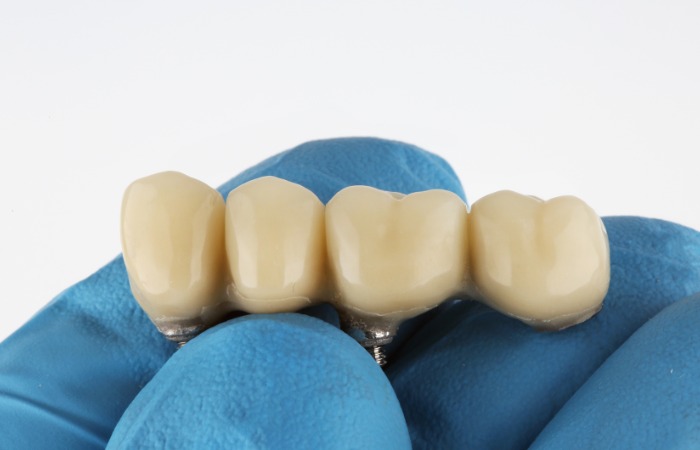
Missing teeth not only affects your confidence but also has a significant impact on oral health and functionality. Everyday tasks like chewing and speaking can become challenging, while the gaps in your smile can lead to misaligned teeth and jaw issues. Thankfully, dental bridges offer a reliable and effective solution for restoring both function and aesthetics.
In this blog, we’ll explore everything about dental bridges, from their types and benefits to their procedure and maintenance, so you can make an informed decision to regain your smile.
Dental bridges are fixed prosthetic devices used to replace one or more missing teeth. They consist of two main parts:
1. Abutment Teeth: These are the natural teeth or dental implants on either side of the gap that act as anchors for the bridge.
2. Pontics: These are the false teeth that fill the gap, made from durable materials like porcelain, ceramic, or metal.
Unlike dentures, dental bridges are not removable and are permanently bonded, ensuring stability and a natural appearance.
There are four primary types of dental bridges, each catering to different dental conditions:
1. Traditional Dental Bridges
This type involves creating crowns for the teeth adjacent to the gap and anchoring a pontic between them. It is the most common type of bridge, ideal when natural teeth surround the missing tooth area.
2. Cantilever Bridges
Cantilever bridges are used when there is only one adjacent tooth available for support. These are less common but are useful in specific cases where traditional bridges aren’t viable.
3. Maryland Bridges (Resin-Bonded Bridges)
These are bonded to the back of adjacent teeth using a metal or porcelain framework. Maryland bridges are minimally invasive, making them an excellent option for front teeth replacement.
4. Implant-Supported Bridges
These rely on dental implants rather than natural teeth for support. Implant-supported bridges are highly durable and are ideal for replacing multiple missing teeth.
Dental bridges offer numerous benefits that make them an ideal solution for missing teeth:
1. Restores Aesthetic Appeal
A dental bridge fills the gap in your smile, restoring a natural and confident appearance.
2. Improves Oral Function
Bridges enable you to chew and speak properly, eliminating the discomfort associated with missing teeth.
3. Prevents Teeth Shifting
When a tooth is missing, the surrounding teeth may shift into the space, leading to misalignment. A bridge maintains proper alignment.
4. Maintains Facial Structure
Missing teeth can lead to a sunken facial appearance. Bridges provide structural support, preserving the natural shape of your face.
5. Long-Lasting Solution
With proper care, dental bridges can last over a decade, offering durability and cost-effectiveness.

The process of getting a dental bridge typically involves multiple steps and takes a few weeks to complete:
Step 1: Consultation and Evaluation
Your dentist will examine your oral health, take X-rays, and determine if a dental bridge is the right solution for you.
Step 2: Preparation of Abutment Teeth
If using a traditional bridge, the adjacent teeth are reshaped to accommodate crowns that will support the bridge.
Step 3: Impressions or Scans
An impression or digital scan of your teeth is taken to create a custom-fitted bridge that matches your natural teeth.
Step 4: Temporary Bridge
A temporary bridge is placed to protect your teeth and gums while the permanent bridge is fabricated.
Step 5: Placement of the Permanent Bridge
Once ready, the permanent bridge is carefully adjusted for fit and cemented into place.
To maximize the lifespan of your dental bridge, follow these care tips:
1. Practice Good Oral Hygiene: Brush your teeth twice a day and floss regularly, especially under the bridge. Use a floss threader or interdental brush for effective cleaning.
2. Avoid Hard and Sticky Foods: These can damage or dislodge the bridge.
3. Visit Your Dentist Regularly: Schedule check-ups to monitor the condition of your bridge and overall oral health.
4. Eat a Balanced Diet: Foods rich in calcium and vitamins strengthen teeth and surrounding tissues.
A dental bridge might be the right option if you Have one or more missing teeth. Or to those who Have healthy adjacent teeth or dental implants to support the bridge. Prefer a fixed solution over removable dentures. Want to restore your smile and oral functionality efficiently, then Diagnopein Dental is here to help you.
The cost of a dental bridge can vary depending on the type, material, and complexity of the procedure. Traditional and cantilever bridges are typically more affordable, while implant-supported bridges might require a higher investment due to the cost of implants.
Consulting with a dentist is the best way to get an accurate cost estimate tailored to your specific needs. In Diagnopein the cost of
Dental bridges are an effective, long-lasting, and aesthetically pleasing solution for replacing missing teeth. They not only restore your smile but also enhance oral functionality and prevent further dental complications. Whether you need to replace a single tooth or multiple teeth, a dental bridge can help you regain your confidence and improve your quality of life.
Schedule a consultation with a trusted dental professional today to explore your options and take the first step toward restoring your smile. Diagnopein’s dental services are in Pune, Mumbai, Delhi, and Nagpur.